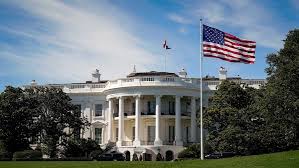
Amid a bitter budget standoff, the Trump administration initiated sweeping job cuts across multiple federal departments—turning the government shutdown into a theater of political power and strategic pressure. The decision to lay off thousands of U.S. government workers offers a revealing window into how the administration views leverage, messaging, and governance during a crisis.
An Escalation Tactic, Not Just Austerity
The mass layoffs are not simply austerity measures—they are a deliberate escalation in a broader political standoff. Rather than wait for a budget deal, the White House chose to weaponize the window of a shutdown, making the cost of gridlock visible not just to legislators, but to ordinary citizens whose federal jobs and services suddenly hung in the balance.
By targeting agencies tied to health, taxation, education, and regulatory oversight, the administration implicitly reshaped the conflict from abstract governance to lived hardship. These cuts sent a signal: the battle is personal, stakes are high, and the costs are not theoretical.
Officials began issuing layoff notices in agencies such as Treasury, Health and Human Services, and the IRS, among others. Many of the affected workers were already furloughed or unpaid, making the leap to permanent dismissal a more dramatic escalation.
Political Calculation at the Heart
At the core of this move was a political gamble: pressure Democrats to concede. President Trump publicly accused Democrats of instigating the shutdown and framed the layoffs as a consequence of their obstinacy. He called the job cuts “Democrat-oriented,” turning worker losses into leverage.
That calculation rests on several assumptions: that voters will blame Democratic obstruction, that affected communities will turn against their elected officials, and that the resulting outrage will help the administration’s agenda. It also assumes the federal workforce will absorb this shock with less resistance than other constituencies.
Some Republicans, however, pushed back. Senators concerned about the optics of dismantling government services warned that essential work—public health, weather forecasting, data reporting—should not be collateral damage. These internal divisions underscore how politically risky the cuts are, even within the president’s own party.
Strategic Targeting of Furloughed Roles
Rather than dismantling core operations outright, the administration appears to focus cuts primarily on furloughed workers—those who were already without pay during the shutdown. This strategy allowed the White House to claim it was minimizing disruption to essential functions while still delivering a dramatic blow to federal staffing.
Within Department of Health and Human Services, for instance, nearly half of staff had already been furloughed before layoff notices were distributed. Many of these employees work on disease surveillance, research funding, or administration of health programs—areas that critics say should not be picked as political targets.
Across the Treasury and IRS, layoffs threatened fundamental tax collection and enforcement operations. In domains such as education and commerce, jobs tied to data analysis, grants administration, and regulation stood at risk. Even the Cybersecurity and Infrastructure Security Agency (CISA), a key national function, was not immune, further signaling that no corner of government was off limits.
Reliance on Verbal Guarantees Over Structured Safeguards
Perhaps the riskiest part of the strategy is its dependence on verbal assurances. The administration did not secure binding guarantees that layoffs would not slide into rescinding essential services or further staffing reductions. Instead, it leaned on the weight of public attention, political pressure, and the notion that once the cooldown passes, restoring staff will be politically burdensome for opponents.
Critics warn that absent structural protections, the transition from temporary cuts to permanent downsizing can be swift and opaque. Federal employees and unions have already sued, arguing the layoffs violate protections during a shutdown. But the administration counters that such suits lack legal grounds to dictate personnel decisions.
The absence of enforceable safeguards means the real test of this gamble lies in how the administration and Congress behave after the standoff ends—and whether promises to restore function hold once the political heat cools.
Uncertainty in Next Phases
Even if this aggressive move succeeds in shifting the negotiation leverage, it does not guarantee resolution. The broader budget fight remains unresolved. Many fundamental issues—such as health subsidy extensions, border funding, and appropriations strategy—are still unsettled.
Hamas’s (in the original analogy) gamble mirrored in this case: throwing away a considerable bargaining chip in hopes the stronger party will not exploit the vacuum. If the administration fails to deliver on promised fixes or restoration, the backlash could be severe.
Similarly, once layoffs take effect and public service outages begin, pressure may mount immediately on Congress to either reverse cuts or press onward—forcing rapid pivots in strategy.
Beyond the mechanics, the White House intended a symbolic message: control, disruption, and willingness to impose real consequences. The layoffs serve as a vivid demonstration of what happens when governance fails—making the stakes visceral.
By turning public workers into visible symbols of a shutdown’s cost, the strategy reframed the political narrative. The White House sought to make the cut of jobs a focal point—not minutiae of budget text—broadcast across media cycles and constituent conversations.
It’s a high-risk, high-reward maneuver. If it succeeds, the administration might force ceding ground from opponents under duress. If it fails, the political and social backlash has the potential to erode legitimacy, degrade operations, and shake the fragile trust that government can function even under strain.
(Source:www.bbc.com)
An Escalation Tactic, Not Just Austerity
The mass layoffs are not simply austerity measures—they are a deliberate escalation in a broader political standoff. Rather than wait for a budget deal, the White House chose to weaponize the window of a shutdown, making the cost of gridlock visible not just to legislators, but to ordinary citizens whose federal jobs and services suddenly hung in the balance.
By targeting agencies tied to health, taxation, education, and regulatory oversight, the administration implicitly reshaped the conflict from abstract governance to lived hardship. These cuts sent a signal: the battle is personal, stakes are high, and the costs are not theoretical.
Officials began issuing layoff notices in agencies such as Treasury, Health and Human Services, and the IRS, among others. Many of the affected workers were already furloughed or unpaid, making the leap to permanent dismissal a more dramatic escalation.
Political Calculation at the Heart
At the core of this move was a political gamble: pressure Democrats to concede. President Trump publicly accused Democrats of instigating the shutdown and framed the layoffs as a consequence of their obstinacy. He called the job cuts “Democrat-oriented,” turning worker losses into leverage.
That calculation rests on several assumptions: that voters will blame Democratic obstruction, that affected communities will turn against their elected officials, and that the resulting outrage will help the administration’s agenda. It also assumes the federal workforce will absorb this shock with less resistance than other constituencies.
Some Republicans, however, pushed back. Senators concerned about the optics of dismantling government services warned that essential work—public health, weather forecasting, data reporting—should not be collateral damage. These internal divisions underscore how politically risky the cuts are, even within the president’s own party.
Strategic Targeting of Furloughed Roles
Rather than dismantling core operations outright, the administration appears to focus cuts primarily on furloughed workers—those who were already without pay during the shutdown. This strategy allowed the White House to claim it was minimizing disruption to essential functions while still delivering a dramatic blow to federal staffing.
Within Department of Health and Human Services, for instance, nearly half of staff had already been furloughed before layoff notices were distributed. Many of these employees work on disease surveillance, research funding, or administration of health programs—areas that critics say should not be picked as political targets.
Across the Treasury and IRS, layoffs threatened fundamental tax collection and enforcement operations. In domains such as education and commerce, jobs tied to data analysis, grants administration, and regulation stood at risk. Even the Cybersecurity and Infrastructure Security Agency (CISA), a key national function, was not immune, further signaling that no corner of government was off limits.
Reliance on Verbal Guarantees Over Structured Safeguards
Perhaps the riskiest part of the strategy is its dependence on verbal assurances. The administration did not secure binding guarantees that layoffs would not slide into rescinding essential services or further staffing reductions. Instead, it leaned on the weight of public attention, political pressure, and the notion that once the cooldown passes, restoring staff will be politically burdensome for opponents.
Critics warn that absent structural protections, the transition from temporary cuts to permanent downsizing can be swift and opaque. Federal employees and unions have already sued, arguing the layoffs violate protections during a shutdown. But the administration counters that such suits lack legal grounds to dictate personnel decisions.
The absence of enforceable safeguards means the real test of this gamble lies in how the administration and Congress behave after the standoff ends—and whether promises to restore function hold once the political heat cools.
Uncertainty in Next Phases
Even if this aggressive move succeeds in shifting the negotiation leverage, it does not guarantee resolution. The broader budget fight remains unresolved. Many fundamental issues—such as health subsidy extensions, border funding, and appropriations strategy—are still unsettled.
Hamas’s (in the original analogy) gamble mirrored in this case: throwing away a considerable bargaining chip in hopes the stronger party will not exploit the vacuum. If the administration fails to deliver on promised fixes or restoration, the backlash could be severe.
Similarly, once layoffs take effect and public service outages begin, pressure may mount immediately on Congress to either reverse cuts or press onward—forcing rapid pivots in strategy.
Beyond the mechanics, the White House intended a symbolic message: control, disruption, and willingness to impose real consequences. The layoffs serve as a vivid demonstration of what happens when governance fails—making the stakes visceral.
By turning public workers into visible symbols of a shutdown’s cost, the strategy reframed the political narrative. The White House sought to make the cut of jobs a focal point—not minutiae of budget text—broadcast across media cycles and constituent conversations.
It’s a high-risk, high-reward maneuver. If it succeeds, the administration might force ceding ground from opponents under duress. If it fails, the political and social backlash has the potential to erode legitimacy, degrade operations, and shake the fragile trust that government can function even under strain.
(Source:www.bbc.com)














